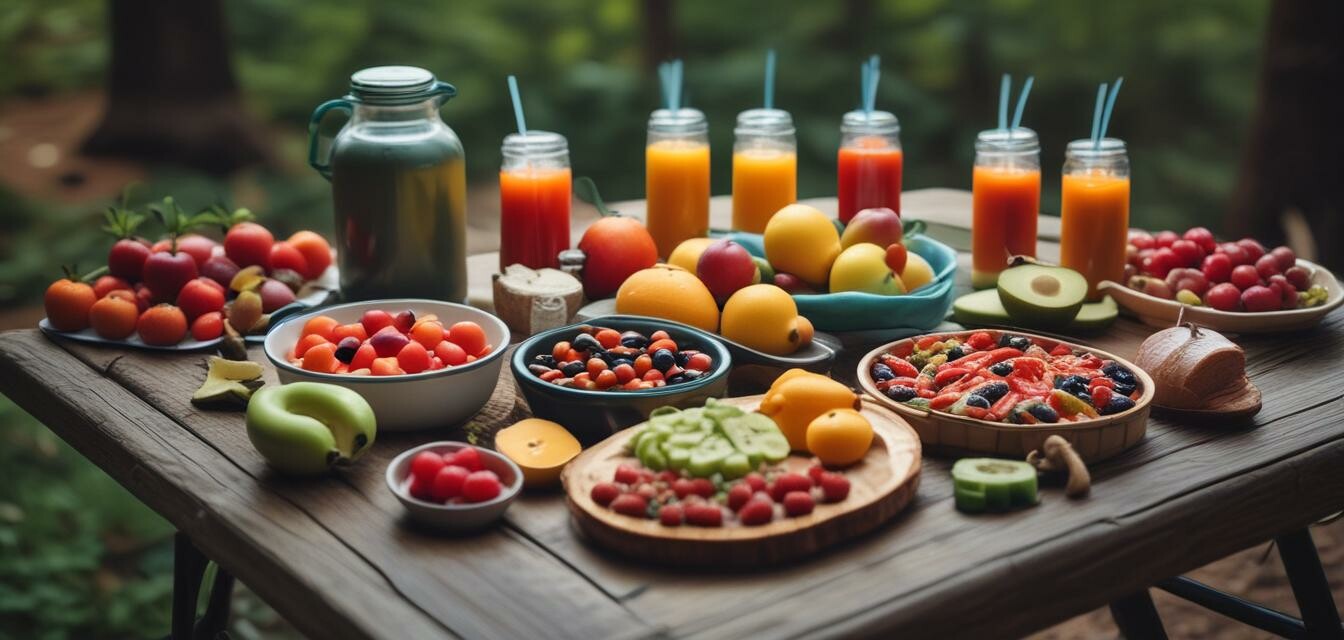
As an Amazon Associate, I earn from any qualifying purchases, at No Extra Cost to You.
Meal Planning Tips for Long-Distance Backpacking
Key Takeaways
- Choose lightweight, nutrient-dense foods to fuel your journey.
- Plan meals around your daily energy needs and trail conditions.
- Incorporate versatile ingredients that can be used in multiple meals.
- Keep meal prep simple to save time and effort on the trail.
- Utilize resealable bags for easy packing and space-saving.
Embarking on a long-distance backpacking trip can be both exhilarating and challenging. One of the most vital aspects to ensure a successful adventure is effective meal planning. Packing the right foods can make all the difference, ensuring you stay energized without excess weight slowing you down. Here are some valuable tips for meal planning on your next long-distance backpacking trip.
Understanding Your Needs
Before planning your meals, it's essential to understand how much energy you'll need. Factors like your body weight, intensity of the hike, and trail environment will dictate your caloric requirements.
| Activity Level | Calories Needed per Day |
|---|---|
| Light Hiking | 2,000 - 2,500 kcal |
| Moderate Hiking | 2,500 - 3,000 kcal |
| Strenuous Hiking | 3,000 - 4,000 kcal |
Choosing the Right Foods
When selecting foods for your backpacking adventure, focus on weight, nutrition, and preparation methods. Here are some recommended food categories:
- Dehydrated Meals: Lightweight and easy to prepare, these are ideal for backpacking.
- High-Calorie Snacks: Nuts, energy bars, and dried fruits provide quick energy boosts.
- Whole Grains: Options like quinoa and couscous are great for versatility and energy.
- Proteins: Look for options like jerky, protein powders, and canned fish.
- Fresh Produce: Carrots, apples, or bell peppers can add freshness, though they require careful planning.
Sample Meal Plan
Creating a sample meal plan can help visualize what to pack. Here’s a quick idea for a day of meals:
| Meal | Food Items |
|---|---|
| Breakfast | Instant oatmeal and nuts |
| Lunch | Tortilla wraps with hummus and dried veggies |
| Snacks | Trail mix and granola bars |
| Dinner | Dehydrated meal (pasta or curry) |
Food Packing Tips
When it comes to packing your meals, organization and minimalism are key:
Beginners Section
- Use resealable bags for each meal to keep them organized.
- Label bags with meal names and cooking instructions.
- Packing in a vacuum-sealed manner can reduce bulk and weight.
- Always carry a lightweight cooking system; options like a small stove or portable grill work well.
Storing Food Properly
Preventing spoilage is crucial, especially for fresh items. Here are some tips:
- Store food in a bear-proof container or hang food bags in trees away from campsites.
- Use cool, shaded areas for perishables if necessary.
- Always check expiration dates, especially on packaged items.
Using Multi-Purpose Ingredients
Maximize your meal planning by using ingredients that can serve multiple purposes:
- Rice can be a base for lunch and dinner.
- Nuts can be eaten as snacks, added to meals, or used in trail mix.
- Dehydrated vegetables can be used in both salads and main entrees.
Conclusion
Long-distance backpacking can be a challenging yet rewarding adventure, and effective meal planning is key to enjoying the journey. By selecting lightweight, nutritious foods and keeping meal prep simple, you can ensure you're well-equipped for the trails. Don't forget to check out our other articles detailing the latest backpacking news, or explore our cooking gear selection to make your meals even more enjoyable!
Pros
- Staying energized throughout the hike.
- Reducing pack weight with lightweight foods.
- Improving meal variety on the trail.
Cons
- Requires careful planning and preparation.
- Potential for food spoilage if not packed correctly.
- May need to carry cooking gear, adding weight.
